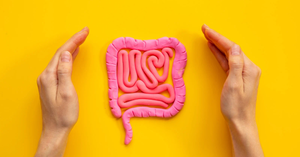Catching a cold is never pleasant, but the right cold medicine can help alleviate symptoms and get you back on your feet. However, with a multitude of over-the-counter (OTC) options available, selecting the right medication can be overwhelming. This guide will help you make an informed choice by understanding your symptoms, the types of cold medicines available, and important considerations to keep in mind.
Understanding Your Symptoms
Before selecting a cold medicine, identify your primary symptoms:
- Nasal Congestion: Blocked or runny nose, difficulty breathing.
- Cough: Dry or productive cough (produces mucus).
- Sore Throat: Pain or irritation in the throat.
- Fever and Chills: Elevated body temperature and shivering.
- Fatigue: General tiredness and weakness.
- Headache or Body Aches: Pain in the head or muscles.
Cold medicines are typically symptom-specific, so knowing what you're experiencing is key.
Types of Cold Medicines
Cold medicines are formulated to target specific symptoms or combinations. Here's a breakdown of common options:
1. Decongestants
- Purpose: Relieve nasal and sinus congestion.
- Active Ingredients: Pseudoephedrine (Sudafed), phenylephrine.
- How They Work: Shrink swollen blood vessels in nasal passages.
- Precautions: Not recommended for individuals with high blood pressure, heart problems, or glaucoma.
2. Antihistamines
- Purpose: Reduce sneezing, runny nose, and watery eyes.
- Active Ingredients: Diphenhydramine (Benadryl), loratadine (Claritin), cetirizine (Zyrtec).
- How They Work: Block histamine, a chemical involved in allergic reactions.
- Precautions: May cause drowsiness; non-drowsy formulas are available.
3. Cough Suppressants (Antitussives)
- Purpose: Control dry, hacking coughs.
- Active Ingredients: Dextromethorphan (DM).
- How They Work: Suppress the cough reflex in the brain.
- Precautions: Should not be used for productive coughs.
4. Expectorants
- Purpose: Loosen mucus for easier expulsion.
- Active Ingredients: Guaifenesin (Mucinex).
- How They Work: Thin mucus in the airways.
- Precautions: Drink plenty of fluids for maximum effectiveness.
5. Pain Relievers/Fever Reducers
- Purpose: Alleviate headaches, body aches, and fever.
- Active Ingredients: Acetaminophen (Tylenol), ibuprofen (Advil), aspirin.
- How They Work: Reduce inflammation and block pain signals.
- Precautions: Avoid aspirin in children and teens due to the risk of Reye’s syndrome.
6. Multi-Symptom Medications
- Purpose: Address multiple symptoms in one dose.
- Examples: NyQuil, DayQuil, Theraflu.
- How They Work: Combine ingredients like decongestants, antihistamines, and pain relievers.
- Precautions: Be cautious to avoid overlapping active ingredients with other medications.
Important Considerations When Choosing Cold Medicine
1. Your Medical History
- Consult a healthcare provider if you have chronic conditions like asthma, diabetes, or heart disease.
- Pregnant or breastfeeding women should seek medical advice before taking OTC cold medicine.
2. Age and Dosage
- Not all medications are safe for children. Always check labels for age-appropriate dosages.
- Use measuring devices provided with liquid medications to ensure proper dosing.
3. Drug Interactions
- Avoid combining medications with similar active ingredients to prevent overdosing.
- Be aware of potential interactions with prescription medications you’re taking.
4. Side Effects
- Common side effects include drowsiness, dry mouth, or jitteriness.
- Read labels and choose medications that suit your tolerance for side effects.
5. Timing
- Daytime formulations (e.g., DayQuil) are non-drowsy, while nighttime versions (e.g., NyQuil) include sedatives like diphenhydramine.
Tips for Safe and Effective Use
- Follow Instructions: Always adhere to the dosage and timing recommendations.
- Hydrate: Drink plenty of fluids to stay hydrated and support medication effectiveness.
- Combine Wisely: Use single-symptom medications if you only have one or two complaints, rather than a multi-symptom formula.
When to See a Doctor
While most colds resolve on their own, seek medical attention if you experience:
- High fever (above 103°F or 39.4°C) or fever lasting more than three days.
- Symptoms that worsen or persist beyond 10 days.
- Severe difficulty breathing, chest pain, or confusion.
Conclusion
Choosing the right cold medicine doesn’t have to be confusing. By understanding your symptoms and reviewing active ingredients, you can find a product tailored to your needs. Always read labels carefully and consult with a healthcare provider when in doubt. With the right approach, you’ll be on your way to recovery in no time.








Be the first one to comment on this story.